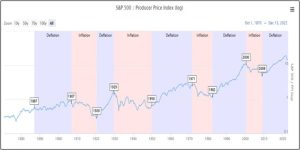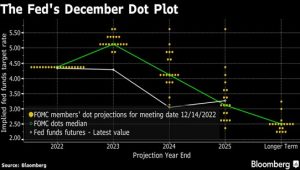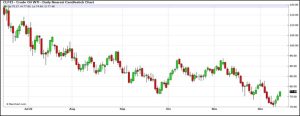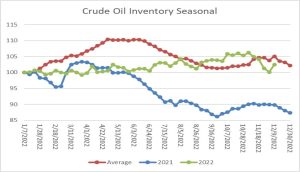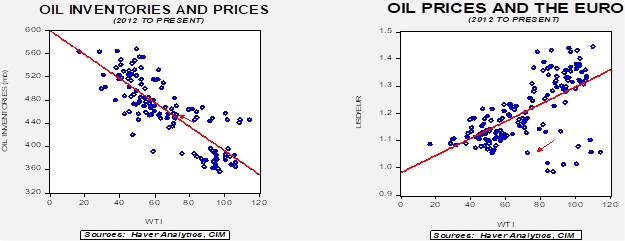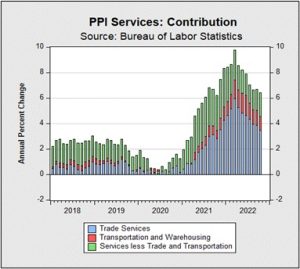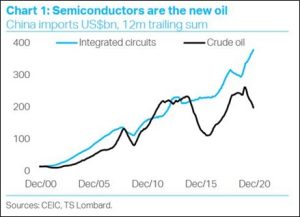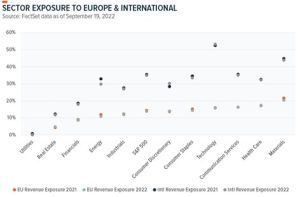by Patrick Fearon-Hernandez, CFA, and Thomas Wash
[Posted: 9:30 AM EST] | PDF
Our Comment today opens with a review of Japan’s new defense strategy, which was released at the end of last week, and illustrates how Japan intends to become a much more powerful military force and a more potent ally as the U.S.-China geopolitical rivalry worsens. We next review a wide range of other international and U.S. developments with the potential to affect the financial markets today, including new developments in the massive COVID-19 surge in China and the wave of pre-Christmas strikes sweeping across the U.K.
Japan: In its updated military strategy, the Japanese government stated that China has now become its main security challenge and that meeting that challenge will require the country to double its defense spending to 2% of gross domestic product by 2027. Based on current GDP, this would bring Japan’s annual military budget to around $80 billion, putting Japan third in the world behind the U.S. and China. Importantly, the new strategy says that much of that spending will be on “counter-strike” missiles that could be used to attack military bases outside of Japan.
- The new military strategy shows how Japan has woken up to the threat it faces from China, Russia, and North Korea. The commitment to boosting its defense capability also illustrates how Japan will be a critical ally in the evolving U.S.-led geopolitical bloc as it seeks to defend itself from the aggressiveness of the evolving China-led bloc.
- Pacifists have complained that the counter-strike missile capability may violate Japan’s exclusively defense-oriented posture under the Constitution’s war-renouncing Article 9. However, the government has long viewed the capability as constitutional so long as three conditions for the use of force are met:
- An armed attack has occurred or is imminent;
- There is no other way to halt an attack; and
- The use of force is limited to the minimum necessary.
- The planned increase in Japan’s defense budget also illustrates the big increases in military spending that we expect to see across the globe in the coming years. In our view, those increases will create enticing investment opportunities in the traditional defense industry, software and cybersecurity, and other related industries, especially in the U.S.
- Japan’s new counter-strike capabilities will ultimately be achieved by extending the range of its homegrown Type 12 stand-off missile.
- However, in the first five years or so until that modification can be made, Japan will be buying hundreds of U.S.-made Tomahawk missiles.
Russia-Ukraine War: Although fighting continues along the entire front from northeastern to southern Ukraine, the bulk of the violence remains centered on the eastern city of Bakhmut, which Russian mercenaries have been trying to capture for months. Meanwhile, Russian President Putin will visit Belarus today to confer with its president, probably in part to signal that Belarus could enter the war in support of Russia and pin down significant numbers of Ukrainian troops in the northwest as a precaution. Separately, a missile attack on the Russian region of Belgorod suggests the Ukrainians continue to get bolder about bringing the war home to Russia, although the Ukrainian officials, as usual, have not taken credit for the attack. Finally, Ukrainian officials say that Russia has procured another batch of Iranian drones for use in its continuing campaign to destroy Ukraine’s energy infrastructure and freeze the Ukrainians into surrender.
- Contrary to what some observers think, new reporting indicates that the Russian defense industry remains capable of producing at least basic, relatively low-tech artillery shells and missiles despite Western sanctions. The problem for the Russians is that they are firing those shells and missiles much faster than they can produce them.
- For example, the analyses show that in June, the Russians were firing 60,000 shells and missiles per day. The rate has recently fallen to about 20,000 per day, but that’s still far more than Russian industry can replace. An analysis by the Jamestown Foundation indicates that the Russian military has fired so many shells and rockets since it invaded in late February that it would cost roughly $92.74 billion to replace the entire range of munitions that have been used.
- As a result, the U.S. Defense Department believes that, in early 2023, Russia will need to begin using old, less reliable shells and missiles that were stockpiled decades ago.
- In a separate issue, Israeli defense officials warned that Iran isn’t just providing drones and missiles to Russia for the war, but, in return, it is asking Russia to provide it with ships to build up its navy. The Iranian navy is reportedly keen to increase its operations in waters as distant as the Indian, Pacific, and Atlantic oceans.
- Iran had previously been hoping to acquire Chinese-made combat ships, but Beijing has proven reluctant to share its military technology.
- Russia’s reliance on Iranian drones and missiles suggest it could be more amenable to helping Iran acquire ships and related equipment.
European Union-Qatar: As EU officials continue to investigate an apparent Qatari effort to buy influence in the European Parliament, Qatari officials warned that the investigation would endanger negotiations for Qatar to help replace some of Russia’s energy supplies to Europe.
- Since Russia’s invasion of Ukraine, Qatar has emerged as one of Europe’s best hopes for weaning itself off Russian natural gas. Germany, France, Belgium, and Italy have been in talks with Qatar to buy LNG on a long-term basis.
- If Qatar acts on its threat to ratchet back energy supplies to the EU, even as supplies from Russia remain largely cut off, it could undermine the recent improvement in sentiment about EU economic prospects and have a negative impact on European stocks.
- On a closely related note, EU energy ministers today are expected to agree on a price cap of €188/MWh for natural gas in an attempt to stabilize and push down energy prices for consumers. However, some large EU countries are still pushing back on the idea out of fears that the price cap could remove the incentive to economize on use and send some gas shipments abroad.
United Kingdom: Prime Minister Sunak is convening a cabinet meeting today to develop a plan for dealing with the massive wave of pre-Christmas strikes rolling across the country. Nurses, ambulance drivers, customs and immigration staff, postal staff, and rail workers will all walk out in the coming days, leaving the government with a growing logistical and political headache.
- Public support for the strikes remains relatively strong, prompting many even in Sunak’s own Conservative Party to urge him to sign off on pay raises, particularly for nurses.
- Of course, doing so would further worsen the government’s finances. In any case, the strikes could also weigh on the British economy and stock market, on top of the recent energy crisis.
China: As expected, the country’s recent abandonment of its Zero-COVID policies has left the disease running rampant in major cities, causing widespread business disruption as staffing shortages threaten to close down factory production lines and transportation workers fall ill. Companies have reportedly been left with no direction on how to handle the sudden surge in cases, after they had formerly been operating under strict guidelines handed down by local governments. As we have previously predicted, the disruptions are likely to weigh on the Chinese and global economies in the coming months until the new “exit wave” runs its course.
China-Australia: China’s foreign ministry has invited Australian Foreign Minister Penny Wong to attend a renewed Australia-China Foreign and Strategic Dialogue this week, restarting a series that has been on ice since 2018 because of worsening geopolitical tensions between the countries. Just as concerns about China’s economic growth likely played a major role in its abandonment of its Zero-COVID policies, those same concerns appear to be driving China to improve relations with several countries in the evolving U.S.-led geopolitical bloc.
U.S. Energy Policy: New data suggests that this year’s emergency releases from the U.S. Strategic Petroleum Reserve have left the federal government about $4 billion ahead. With the sales set to end this month, Washington has sold 180 million barrels of crude at an average of $96.25 a piece, well above the recent market price of $74.29. Unfortunately, that paper gain may not materialize if prices rebound ahead of any efforts to replenish the reserves.
U.S. Economic Performance: In a new poll by the Wall Street Journal, a majority of respondents said that they expect the U.S. economy to be worse in 2023 than it was this year, despite the recent cooling in inflation. The finding is consistent with our view that a recession is likely to begin in the first half of 2023. Of course, the pessimism could also become self-fulfilling if it means consumers pull back on spending to build a financial cushion for tough times ahead.



